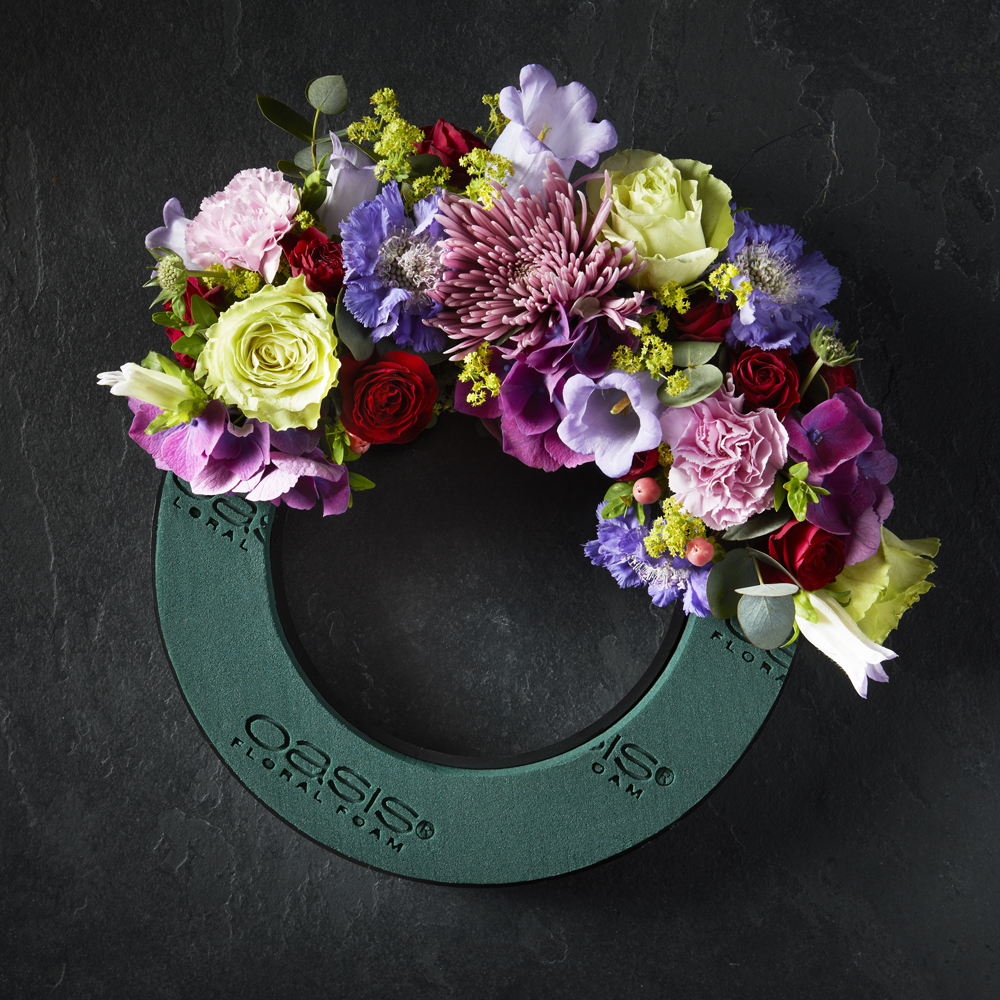Foam … that brick shaped green stuff that is oh so tempting to push holes in (don’t – it damages the structure and stops water take up) and considered by some to be the evil beastie of the flower industry.
Given there are all sorts of other things that are just as bad, if not worse, like cable ties, the wrong sort of packaging, rubber bands, plant pots etc it’s a bit unfair – especially as manufacturers are doing their darndest to find sensible, affordable alternatives and, in the case of the biggest, OASIS® Floral Products, have been since 1994 – way before ‘being green’ was a thing!
Indeed, just their R&D budget on developing more sustainable options runs into the millions and they have already come up with alternatives. Like OASIS® TerraBrick™ Floral Media – a certified compostable flower holding base, FibreFloral™ Design Media, made from volcanic basalt rock with a bio-based binder and their OASIS® Bio Floral Foam Maxlife which degrades by 91% in 3 years in an anaerobic environment – maybe not perfect but a heck of a lot better than previous versions.
And there are other developments coming through. Like a corn-based compostable polylactide (PLA) option from Phoam which has been in the making for 10 years, again as a result of a multimillion-pound R & D programme. Due to be launched September ’24 the upside is that it can degrade quickly, the downside is you need access to an industrial composting facility, or it just goes in the green waste bin.
Agra Wool is another Basalt based foam brick but with either cane or beet sugar as the binder while the US designed Oshun Pouch is made from natural coco coir wrapped in a plant-based membrane that expands when watered.
So, whilst the Holy Grail of producing a completely plastic free and easily compostable, water retaining medium is still a way off, it’s not being ignored by anyone.
However, not only are the alternatives to the more traditional foam dramatically more expensive – a cost not easy to absorb and which most consumers won’t pay – but currently none offer either the same range or shapes or the same level of water retention. And that is an issue and means that there is currently no viable alternative that can be adopted across the industry.
For example, many wedding and corporate event venues – especially if a listed building – won’t allow standing water for Health, Safety, and property protection issues. If temperature levels are high the flowers need the additional water source to avoid wilt and disappointed customers, and OASIS® Bio Floral Foam Maxlife is currently the most affordable way to create certain designs, particularly bespoke funeral tributes which are often the most meaningful way the bereaved can say goodbye to their loved ones.
That said, in terms of actual Foam use, it is a small fraction of the industry. These days, most flowers are delivered as bouquets so no foam is involved and many, many bespoke florists are using the traditional, old-school techniques of foam free design wherever they can. Many florists offer a full ‘eco’ collection as an alternative option and, as we show in our Waste Not section, in the case of event work many are implementing a repurposing service.




